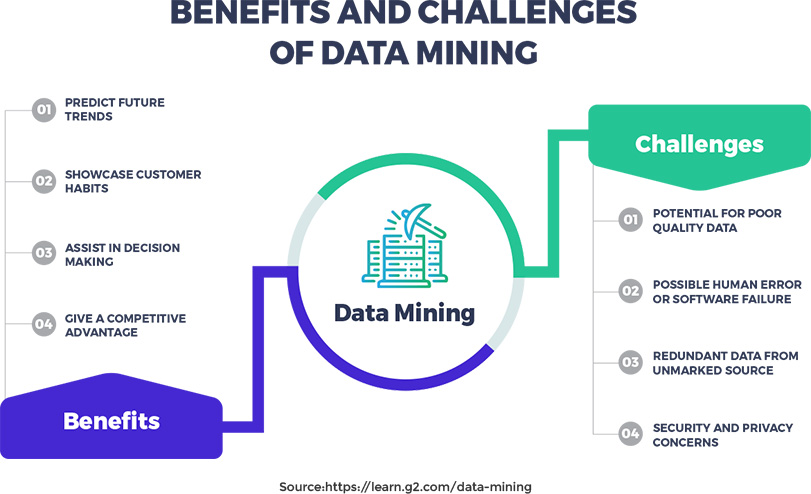Data mining is one of the most important tasks for a business to get a firm handle on. Large amounts of data are retrieved from a variety of sources and put into a centralized database. Certain data mining techniques can even be used to identify patterns before the information is put into the system. In today’s business world, information is the most valuable commodity, so it’s crucial for companies to stay up to date.
Brands that make use of data mining and data enrichment services are going to find valuable insight into their customers. Top brands are using data to retain customers, define marketing strategies, and engage with their target market. These all lead to a boost in sales and higher profits.
Data Mining Techniques for Harvesting Data
Capturing large sets of data requires a detailed plan that is dependent on the brand. However, the goals are the same – to provide insight and guide the company in the right direction. With that in mind, here are some data mining techniques used to build a data-centric business.

#1: Tracking Patterns in Data
Pattern tracking is one of the most fundamental data mining techniques, so this is the best place to start. Patterns can be identified during the data entry process and organized as the information is placed into the system. Raw data will be pulled from a number of different sources. The data entry process will then identify specific patterns. This can range anywhere from a social media platform to keywords in negative reviews.
For example, if a brand finds that certain types of products are selling more than others, then they can use pattern tracking techniques to determine why. That allows them to replicate certain techniques by creating similar products or stocking more of products that are in demand.
#2: Detecting Anomalies
There will be times when the ability to recognize data doesn’t paint a clear picture, so businesses need to have methods in place to detect anomalies. For example, a business identifies a pattern with a product where 75% of sales are coming from people between the ages of 30-40. Then suddenly one month, there is a huge boost in the number of 18-30 year-olds who are buying that same product. That would be an anomaly that would merit investigation.
This is an extreme scenario. Most anomalies will not be this large, which is why it’s important for a business to be able to effectively identify them. In the example above, data would be gathered about these specific purchases during this specific timeframe. The goal would be to understand why it happened and if it can be replicated.
#3: Classification Analysis
Classifying information that businesses collect on a daily basis is also an important data mining technique. For instance, when there is an email exchange with a customer, how is it classified? Is it organized by product or by the issue being reported? Maybe there is a more detailed way to classify it. Identifying patterns comes down to classifying data the right way. All brands have their own way of saving important data.
Data entry should follow a process of classifying information as it’s entered into the system in a specific way. Brands should have a detailed system in place. Top tier data entry providers will help find the right solutions. For instance, these providers can improve marketing strategies by assisting in identifying and removing useless information.
#4: Association Rule Learning
Mistakes are a normal part of businesses, both large and small, but small businesses tend to feel the impact more when mistakes are made. There’s no way to completely eliminate errors since they can be made by employees, suppliers, and sometimes even customers. Data entry is not immune to these types of mistakes. Simple mistakes in data entry can spawn several other issues, which can eventually cascade into huge issues. In short, one mistake is not a huge deal as long as it’s detected, but multiple mistakes can have lasting, long-term negative effects.
With that said, this is what makes anomaly detection so important. The best data entry providers have developed techniques to detect anomalies so that these issues don’t get into the main database. Top companies will have access to data mining tools & techniques to handle complex entries of thousands of records without huge mistakes getting through.
#5: Regression Analysis
In marketing terms, regression analysis is used to predict certain patterns in data in order to develop better data mining tools. For instance, the relationship between video advertisements and sales would be important in planning future video marketing strategies. This technique gives managers access to the data needed to draw regression lines that predict future patterns by using past data records.
The goal here is to find ways to control these variables. Using the same example from above, if managers see a pattern between one type of video advertisement that led to higher sales, then they would be able to replicate that success. So, in essence, they have used the analytical method to minimize the line between regression and predictions, thus making their strategies more accurate. Regression analytics can be used for sales, brand preference, market share, pricing, and distribution.
#6: Cluster Analysis
Cluster analysis is used to identify specific groups of common features within a data set. For instance, if a business wanted to track sales and marketing for a specific geographic location, then they would cluster all data within that location for analysis. This data mining technique is used mostly with market segmentation to create more efficient marketing strategies.
Cluster analysis is the process top brands use to create promotions. More specifically, they use it to ensure that their promotions target the right audience. Look at how big names like Amazon always seem to target the right customers with their advertisements. Data entry experts will identify relevant data clusters and point them out to leaders who make decisions. The combinations are endless, so it’s up to each brand to understand their needs and develop a system.
#7: Prediction Analysis
Predictive analysis is considered the most valuable data mining technique because it’s a process that businesses use to project their future data needs. In short, it allows brands to plan their data collection methods around gathering the right data. Historical data is used to predict future trends and tends to be highly accurate.
One of the primary examples that can be used to describe prediction analysis is the process used by banks to approve loans. They use a combination of credit history, bank statement analysis, and income to determine the chances of an individual repaying the loan. Banks will also use this knowledge to create their marketing strategies and loan promotions. After all, it would make little sense to spend money marketing to individuals who are not likely to get approved for a loan.
Benefits of Data Entry Techniques
Data entry is a rapidly growing industry that is in high demand. This growth is expected to continue as the need for information becomes more apparent in businesses. Data plays a fundamental role in business due to its wide range of benefits.

- Marketing teams can develop historical models to predict future trends as the business continues to grow.
- The right data mining concepts and techniques ensure that all departments within a company are on the same page.
- Tracking historical financial data makes it easier to create promotions that target the right people, so investments in marketing will lead to more buyers.
- Data mining identifies which products and services are in the highest demand so that brands know which ones to focus on in terms of production.
- Experts have access to data mining applications that provide insights so that brands can plan ahead and make better decisions.
- Top tier data entry services will help businesses develop better resources for gathering data, thereby creating new opportunities for growth.
- Data mining can be used to identify additional revenue streams that allow businesses to move into new markets, opening up even more opportunities for profit.
- Predictive analysis through data mining will give brands a blueprint for designing new products and services.
- Data mining algorithms can be designed to provide insight into the interaction between consumers and brands.
Partner with the Data Mining and Data Entry Experts
Data mining methods tend to focus on the discovery of specific patterns of data, so it’s important that data is extracted with the context in mind. That’s why top brands partner with experts in data mining and data entry. Expert providers like Data Entry Outsourced (DEO) don’t just scrap information from random sources and paste it into a spreadsheet. They use complex data mining software to create sophisticated algorithms that provide value to a company.
Building an in-house team is an expensive and time-consuming task that will still never squeeze all of the true value from data. With services like data entry, data conversion, data processing, and more, DEO has years of experience, access to the right tools, and has built a team of the top data entry experts in the world.
Get all of the value from essential data and make better decisions by partnering with data experts at Data Entry Outsourced.
– Data Entry Outsourced





